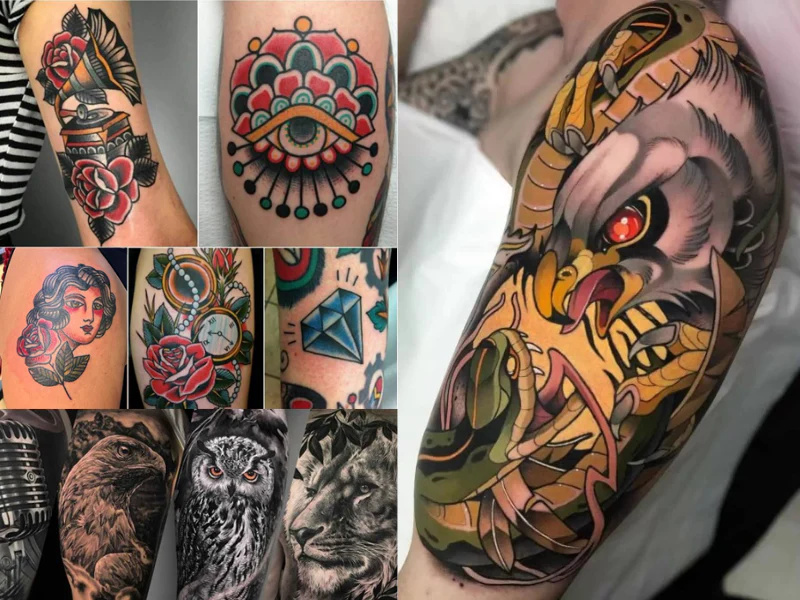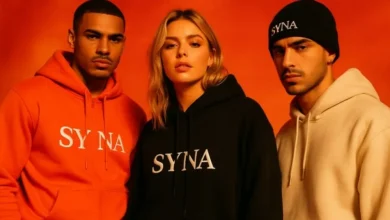Tattoo Styles: From Tradition to Modern Expression

A skilled tattoo artist knows that tattoos are not just body decorations but also a way to express individuality, tell stories, or honor heritage. Over centuries, cultures around the world have created their own unique traditions and techniques. Today, tattoos combine art, symbolism, and personal meaning. For clients, choosing the right tattoo artist and style is the key to creating a lasting work of art. Let’s explore the most important tattoo styles, their origins, and the techniques behind them.
Traditional Tattoos
When we say “traditional tattoo,” we usually mean two main directions that developed separately in different parts of the world: Japanese traditional tattoos and American traditional tattoos (Old School).
Japanese Traditional Tattoos
Japanese tattooing, also called Irezumi, has a long history. It is admired for its artistry, bright colors, and meaningful designs. Common motifs include:
- Dragons – wisdom, strength, protection
- Koi fish – luck, courage, perseverance
- Cherry blossoms – beauty and the shortness of life
- Samurai and masks – honor, battle, and spirit
Japanese tattoos usually cover large areas like the back, chest, or sleeves. The design flows with the body’s shape, with elements connected by backgrounds like water, wind, or clouds. A tattoo artist working in this style must understand both the technique and the cultural meaning of each symbol.
Old School (American Traditional Tattoos)
Old School tattoos appeared in the late 19th and early 20th centuries and were popular among sailors, soldiers, and adventurers. Anchors, hearts, swallows, roses, and daggers reflected important life events and later became classic tattoo symbols worldwide.
This style is recognizable by:
- Thick black outlines
- Bold shading
- Bright but limited color palette
Old School tattoos are versatile — a small tattoo looks stylish alone, while a collection of them creates a striking composition. Over time, Old School inspired New School and Neo Traditional, which added more details, colors, and creative freedom.
New School and Neo Traditional
New School tattoos are modern, colorful, and playful. They often include cartoon-like designs, exaggerated shapes, and dynamic compositions. Freeform, humorous, or abstract motifs are common, and the style encourages bold experimentation.
Neo Traditional combines the boldness of Old School with more intricate details and richer color gradients. This style maintains clear outlines but allows more realism and artistic refinement.
Realism Tattoos
One of the most advanced and popular styles today is realism tattoo. The goal is to create images that look like photographs or real-life subjects. A skilled tattoo artist can transform portraits, animals, flowers, or objects into lifelike artwork.
Techniques in Realism:
- Color tattoo – Uses bright and natural colors to make designs vivid and lifelike. Suitable for portraits, flowers, and animals.
- Greywash – Diluted black ink creates smooth transitions and depth. Essential for shading and realistic textures.
- Black and Grey – Works only in black and grey tones, perfect for timeless, dramatic designs.
- Pastel tones – Soft shades add delicacy and artistic mood, often used for romantic or floral motifs.
These techniques can be combined depending on the design, skin tone, and the vision of the tattoo artist. Realism tattoos often require long sessions and high-quality equipment to achieve precise shading and detail.
Graphic Styles
Graphic tattoos focus on lines, shapes, and contrast rather than heavy color. Substyles include:
- Engraving (Gravure) – Inspired by old prints with fine lines and precise shading
- Linework – Clean lines of different thicknesses for minimalistic or complex designs
- Geometry – Symmetrical patterns, shapes, and abstract designs
- Sketch Style – Looks like pencil or pen sketches, dynamic and spontaneous
Graphic styles are versatile and can be combined with other techniques such as fine line or ornamental designs.
Ornamentals and Polynesian Tattoos
Ornamental tattoos feature large-scale patterns, mandalas, lace-like details, or abstract geometry. They work well for sleeves, backs, and other large areas. The balance between lines and dots is key. Animal elements may be added to bring additional symbolism.
Polynesian tattoos are part of a centuries-old tradition. Each symbol had a meaning for the tribe, family, or individual. For example:
- Shark teeth = strength and protection
- Waves = life and change
- Spears = courage and fighting spirit
- Masks = protection against evil
Polynesian designs often cover arms, legs, or entire body sections. Choosing a Polynesian tattoo requires respect and understanding of the traditional symbols.
Lettering
Lettering tattoos are more than text; they are art. Fonts, curves, and calligraphic styles turn words into visual statements. Blackletter, serif, or cursive styles are common. Lettering works well alone or as part of another design.
Many clients choose quotes from books, films, or songs, but possibilities are endless. Combined with Chicano style, lettering becomes bold, cultural, and visually striking.
Fine Line and Minimalism
Fine Line tattoos are delicate, precise, and rely on thin lines. They require a steady hand and strong skill — even small errors are noticeable.
Minimalism uses clean geometry, small forms, and minimal color. It’s subtle yet elegant, suitable for first tattoos or those who prefer simplicity. Common motifs include small symbols, flowers, or animals.
Trash Polka
Originating in Germany, Trash Polka combines black ink with chaotic red elements. Inspired by collages, photography, and graphic design, it conveys rebellion, decay, and intensity. Designs often include skulls, abstract shapes, or bold imagery. Trash Polka tattoos are meant to be visually shocking and confrontational.
How to Choose Your Style
- Love tradition? Choose Japanese or Old School.
- Want a lifelike image? Opt for realism tattoo.
- Prefer clean and simple designs? Try graphic or minimalism.
- Looking for bold and unique art? Consider Trash Polka or Biomechanical.
- Value cultural meaning? Explore Polynesian designs.
The most important factor is discussing your idea with a tattoo artist. An experienced professional will help translate your vision into a design that suits your body and personality.
Conclusion
Tattoo styles are as diverse as the people who wear them. From Japanese dragons to American Old School anchors, from colorful New School to dramatic Trash Polka, there is a style for everyone. Choosing the right design is not only about aesthetics but also about finding the right tattoo artist who understands the techniques and meaning behind each style.
Whether you want a bold Old School anchor, a delicate mandala, or a lifelike realism tattoo, tattoos offer endless opportunities for self-expression. Your body is the canvas, and your tattoo tells a story only you can share.




